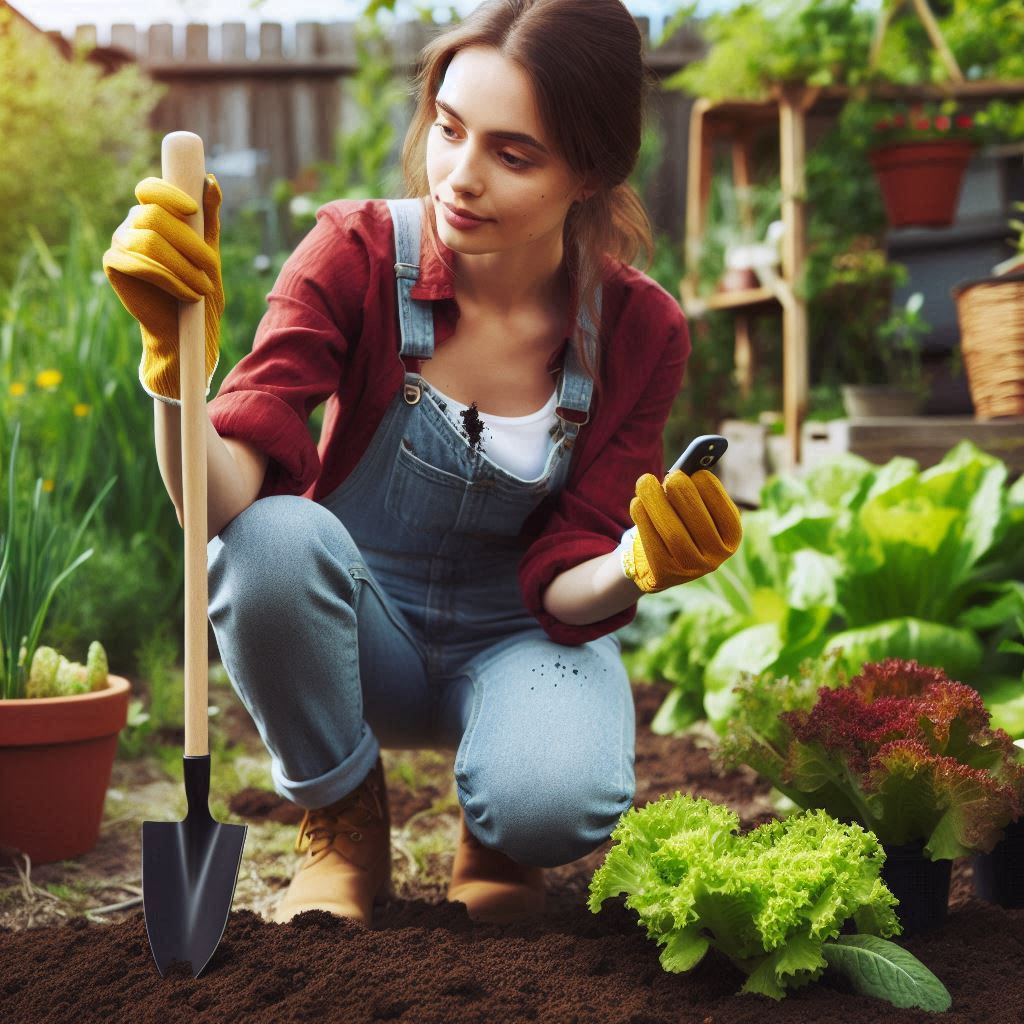This article contains affiliate links. For more information, please read my Affliate Disclosure
Starting an organic garden from scratch can seem like a big task, but trust me, it’s one of the most rewarding things you can do for yourself, your family and the environment. Whether you’re looking to grow your own food, reduce your carbon footprint or just enjoy some time outdoors, this guide will walk you through everything you need to know to get started.
Importance of Organic Gardening: Benefits for your Health and Environment
Let’s kick things off by talking about why organic gardening is so important. You might have heard the term “organic” thrown around a lot, but what does it really mean? Simply, organic gardening means growing plants without the use of synthetic pesticides, herbicides or fertilizers. Instead, you rely on natural methods to keep your garden thriving.
One of the biggest benefits of organic gardening is the impact on your health. By growing your own fruits and vegetables organically, you can reduce your exposure to harmful chemicals. Plus, organic produce often has higher nutrient levels compared to conventionally grown crops. It’s fresher too—there’s nothing quite like the taste of a tomato picked right off the vine I can still taste the tomatoes that my grandpa use to grow.
Beyond personal health, organic gardening is also a gift to the environment. Synthetic chemicals can harm beneficial insects, contaminate water sources and degrade soil health. By choosing organic methods, you’re helping to preserve biodiversity, protect pollinators and maintain healthy soil ecosystems. And let’s not forget organic gardening encourages sustainability reducing your reliance on store-bought produce that’s often transported from miles away.
Choosing the Right Location: Sunlight, Soil Quality, and Water Access
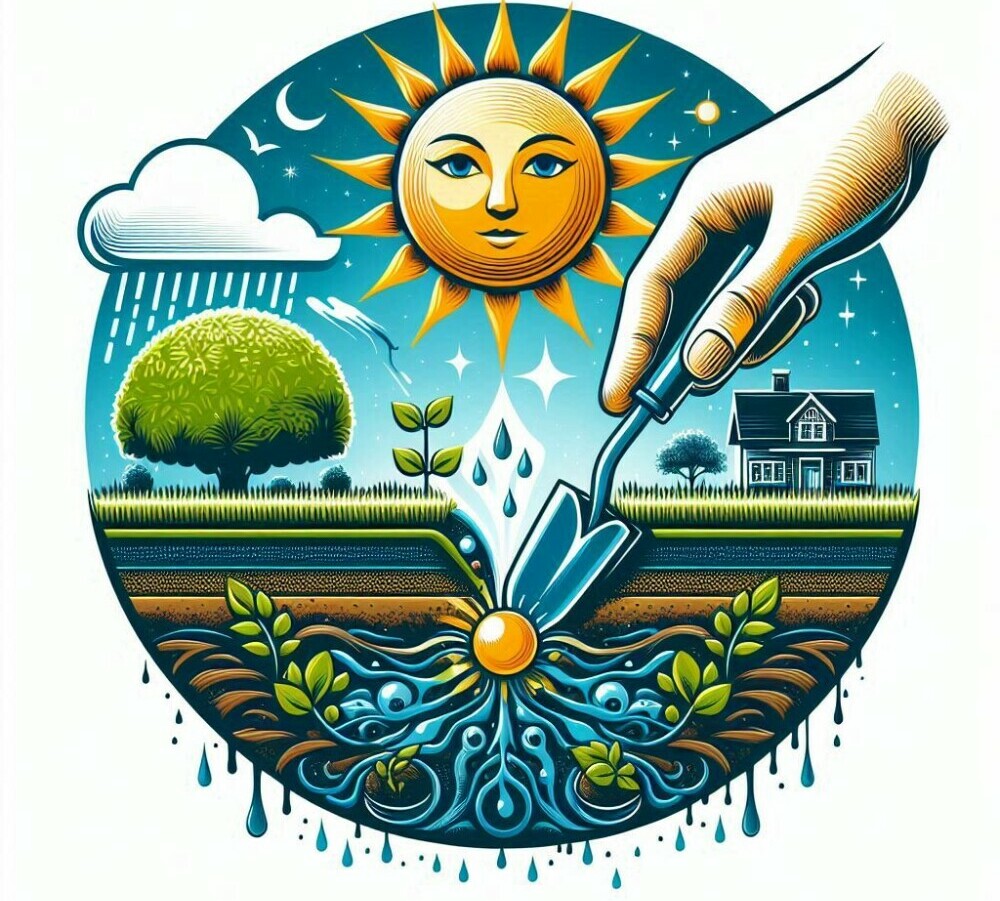
Now that we know why organic gardening is the way to go, let’s talk about where to put your garden. The right location is key to a successful garden, so take a little time to scope out your yard.
Sunlight is crucial. Most vegetables and herbs need at least 6 to 8 hours of direct sunlight each day. Observe your yard at different times to see where the sun hits the most. If you’re tight on space, even a sunny balcony or windowsill can work for a small container garden.
Soil quality is another important factor. Healthy, rich soil is the foundation of a good garden. If your soil is too sandy, too clayey, or lacks nutrients, your plants will struggle. Don’t worry if your soil isn’t perfect—there are ways to improve it, which we’ll get into later.
Water access is the third piece of the puzzle. Your garden should be close to a water source so you can easily give your plants a drink when they need it. Trust me, you don’t want to be lugging heavy watering cans across your yard on a hot day!
Essential Tools and Equipment: Must-Haves for the Beginner
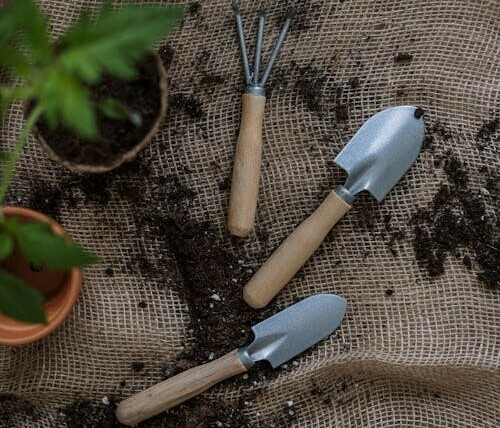
Starting out, you don’t need a shed full of fancy tools. However, there are a few essentials that will make your gardening life much easier.
- Gloves – A good pair of gardening gloves will protect your hands from thorns, splinters, and dirt.
- Hand Trowel – Perfect for planting seedlings, digging small holes, and removing weeds.
- Garden Fork – Great for turning soil, breaking up clumps, and aerating your garden bed.
- Watering Can or Hose – Depending on the size of your garden, you’ll need a way to water your plants. A can is fine for smaller areas, but a hose with a gentle spray nozzle is better for larger spaces.
- Pruners – These will help you trim plants and harvest your crops without damaging them.
- Garden Rake – Useful for smoothing soil, removing debris, and spreading mulch.
These basic tools will get you started, and as you get more into gardening, you can always add to your collection.
Preparing the Soil: Testing and Enriching for Optimal Growth
Now, let’s dig into the heart of your garden—literally! Preparing your soil is one of the most important steps in starting an organic garden.
First, it’s a good idea to test your soil to see what you’re working with. You can buy a simple soil test kit online or from a garden center. This will tell you the pH level of your soil and what nutrients might be missing.
Once you know the condition of your soil, you can enrich it to make it more fertile. Compost is your best friend here. Adding compost improves soil structure, adds nutrients, and encourages beneficial microorganisms. You can make your own compost from kitchen scraps and yard waste or buy it from a garden center.
Another option is to add organic matter like manure or leaf mold. These not only provide nutrients but also help retain moisture in the soil. If your soil is too acidic or alkaline, you can adjust the pH with natural amendments like lime (to raise pH) or sulfur (to lower pH).
Selecting Suitable Plants: Best Varieties for Beginners
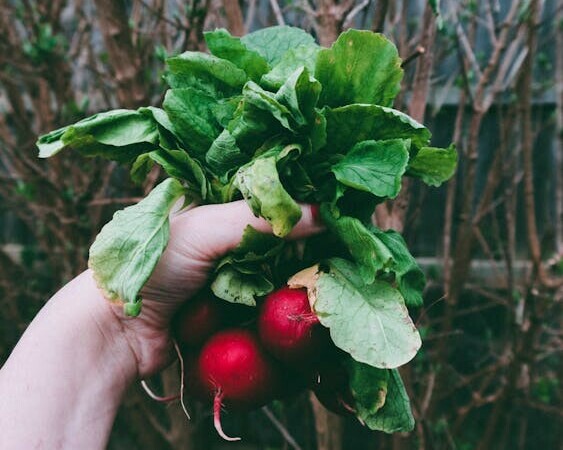
Choosing what to plant is one of the most exciting parts of gardening. If you’re a beginner, I recommend starting with some easy-to-grow plants that are forgiving if you make a few mistakes.
For vegetables, try lettuce, radishes, carrots and zucchini. These are generally quick to grow and don’t require much fussing over. Tomatoes are also a great choice—they’re a bit more demanding but worth the effort.
If you’re interested in herbs, basil, mint, rosemary and thyme are all hardy and grow well in most conditions. Plus, they’re perfect for adding fresh flavor to your cooking.
When selecting plants, also consider your local climate and growing season. Your local nursery can help you choose varieties that thrive in your area.
Organic Pest and Weed Control: Safe and Effective Methods
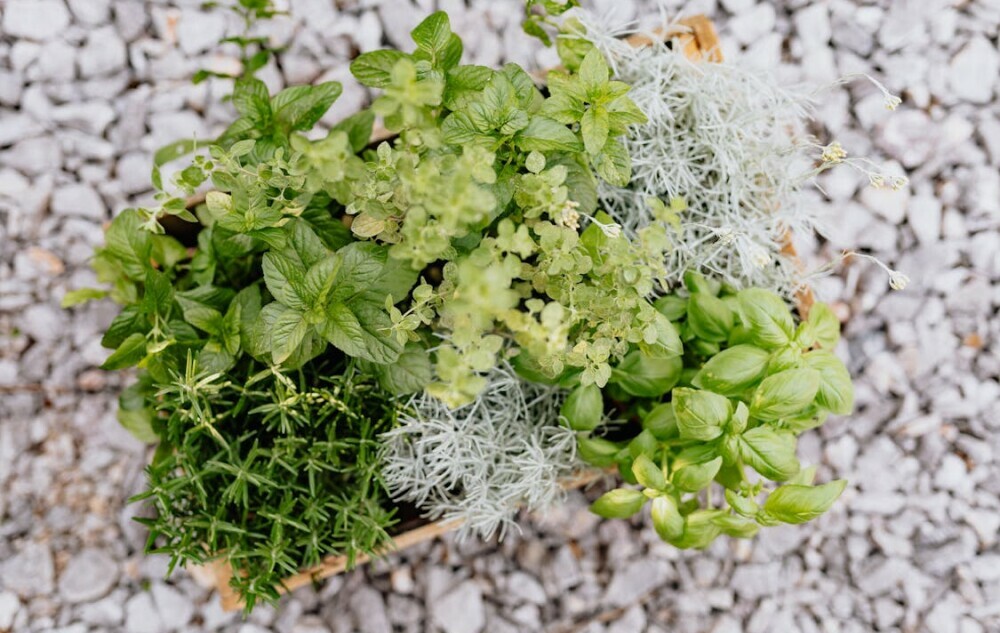
One of the challenges of organic gardening is dealing with pests and weeds without reaching for chemical solutions. But don’t worry—there are plenty of natural methods that work just as well!
For pests, companion planting is a fantastic strategy. Certain plants, like marigolds, naturally repel pests like aphids and nematodes. You can also use natural insecticides like neem oil or insecticidal soap, which are safe for plants and the environment.
Hand-picking pests off your plants is another effective method, especially for larger bugs like caterpillars, snails, slugs and beetles. If you’re dealing with a more serious infestation, consider introducing beneficial insects like ladybugs or lacewings, which prey on common garden pests.
Weeds are another battle, but mulch can be beneficial for this. A thick layer of organic mulch, like straw or wood chips, will smother weeds and help retain moisture in the soil. My dad is a member of our local men’s shed and he will bring home sawdust from the extractor bins, and I’ll put them on the garden, I have found this to be beneficial for us by keeping weeds down but also bugs. However, those stubborn weeds, good old-fashioned hand-pulling is sometimes the best solution.
Watering and Maintenance: Best Practices for Sustainable Growth
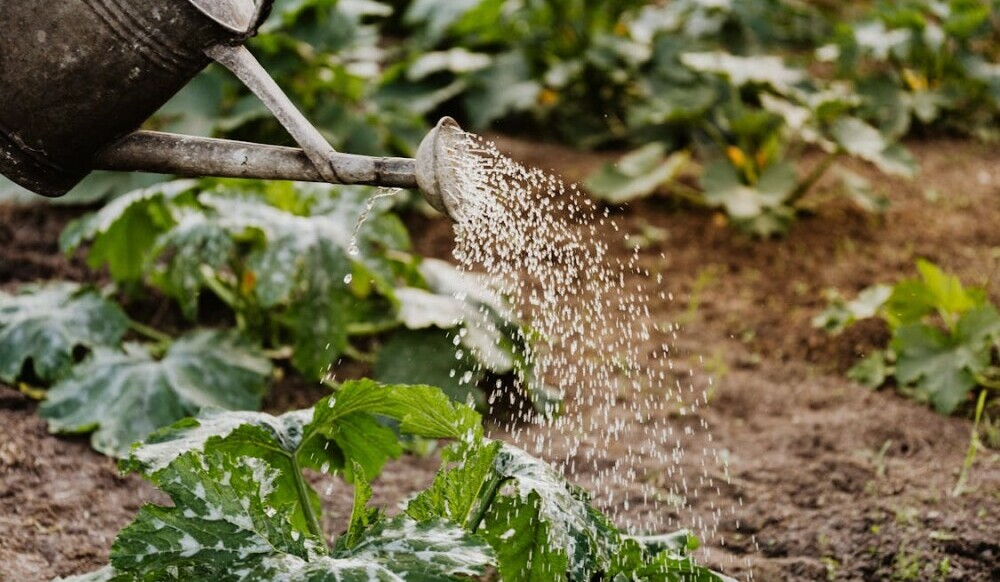
Keeping your garden well-watered is essential, but how you water can make a big difference in your plants’ health and your water bill.
Watering in the morning is best because it allows plants to absorb moisture before the heat of the day. This also helps prevent fungal diseases, which can thrive in damp, cool conditions at night.
When you water, aim for the base of the plants rather than the leaves. Wet leaves can encourage disease, and water is more effectively absorbed by the roots.
To make your garden more sustainable, consider setting up a rain barrel to collect rainwater, or use a soaker hose or drip irrigation system to water your plants efficiently or you can be like me I use the grey water from the washing machine, better for my garden than down the sewer, however be sure if you decide to go this way you are using biodegradable washing powder or liquid, I actually make my own which I sourced from Pinterest from Style Curator here is the link if you are interested.
Harvesting and Beyond: When and How to Harvest, Storing, and Replanting for Continuous Growth
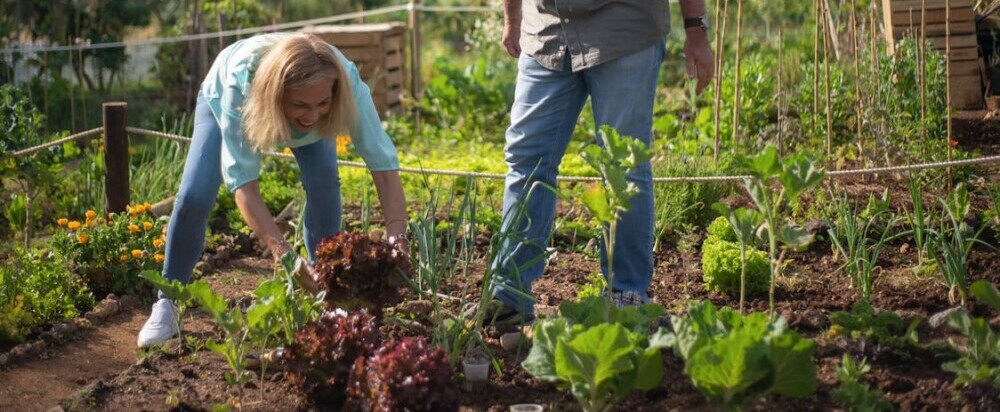
Finally, let’s talk about the fruits of your labor—harvesting! Knowing when to harvest is key to getting the best flavor and nutrition from your plants.
For most vegetables, the best time to harvest is when they’re fully grown but not overripe. For example, they say to pick tomatoes when they’re fully colored but still firm however I sometimes need to pick before the king parrots find my plants so I will harvest mine when they are just starting to show some colour then I will place them in a brown paper bag which will allow them to continue to ripen also harvest zucchini when they’re about 6-8 inches long.
After harvesting, how you store your produce matters. Some vegetables, like potatoes and onions, store best in a cool, dark place. Others, like leafy greens, should be kept in the fridge.
To keep your garden going strong, consider succession planting—planting new crops in the same space as soon as you harvest the old ones. This way, you can enjoy fresh produce throughout the growing season.
Wrapping Up
Starting an organic garden from scratch is a journey, and like any journey, it has its ups and downs. But with a little patience and care, you’ll be rewarded with delicious, healthy produce and the satisfaction of knowing you grew it yourself. So, grab your gloves, dig into that soil, and start planting—your organic garden awaits!
Happy Homesteading xx

